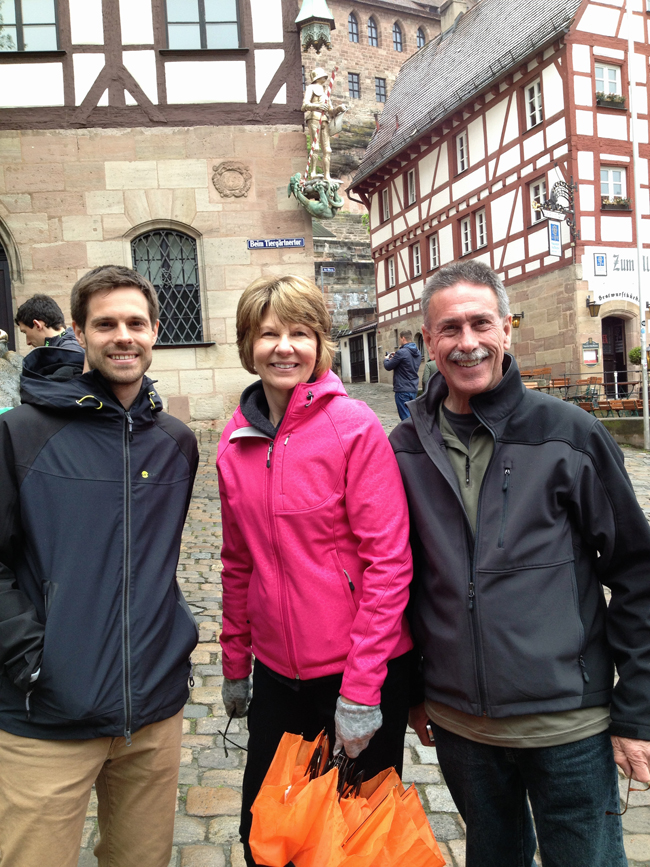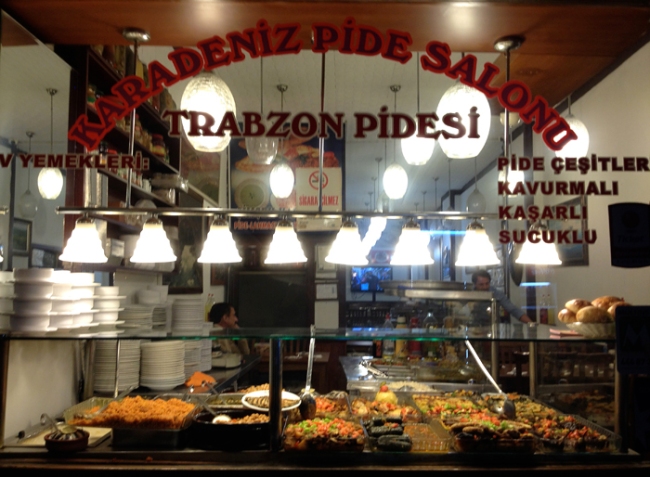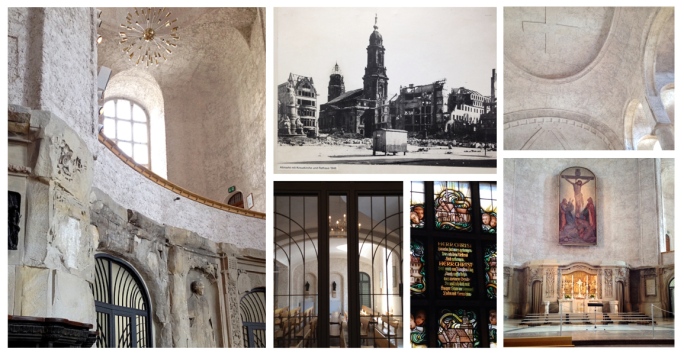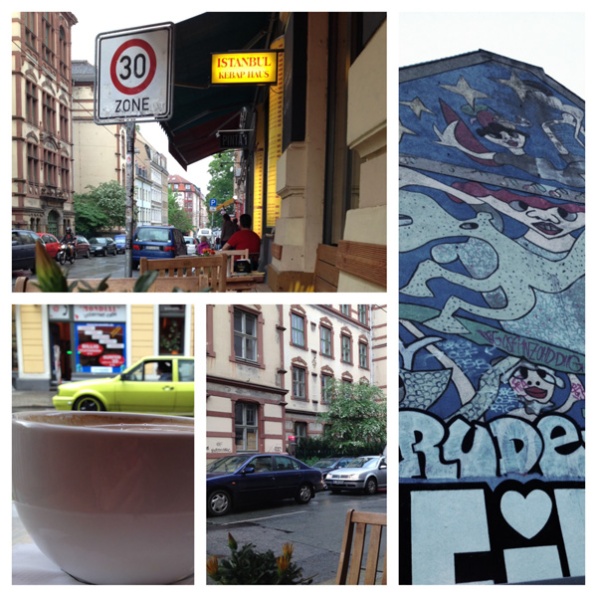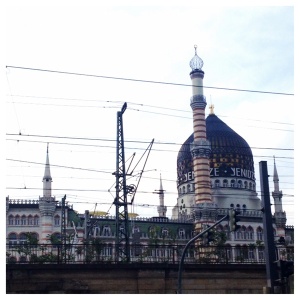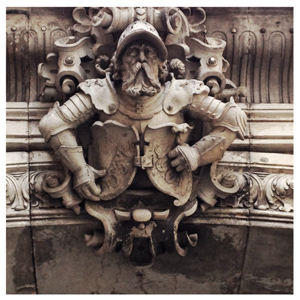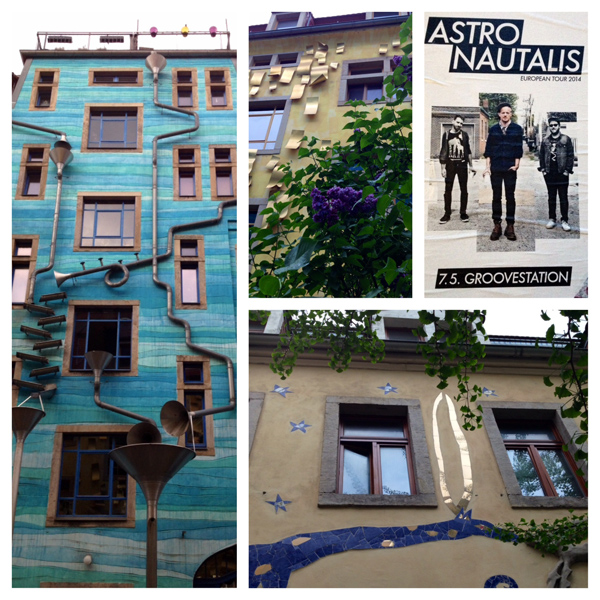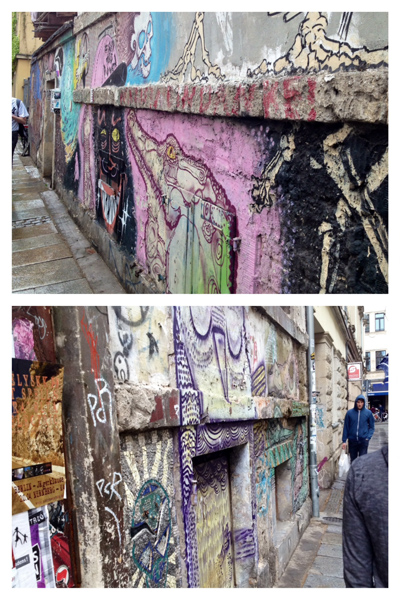My parents visited for two weeks at the beginning of May. It was their second visit to Germany; the first was for their honeymoon in 1979. At that time they stayed in Heidelberg with friends who took them sightseeing in the Alps, to Munich, and across the villages of Bavaria.
Afterwards my grandparents charted my parent’s travels, (as well as their own) on a road map of Germany. The map was dusted off and given to us to record our journeys when we moved, and Derek and I unpacked it to see where they had been.
Their route had missed the Franconian cities of Würzburg, Nuremberg, and Bamberg — We were excited to show them some ‘new’ sights in the region of Bavaria where we have been living. We also planned a 4-day getaway to the Rheingau and Mittelrhein (also known as the “Romantic Rhine” ) to take in the wine, scenery and half-timber villages.
Here is a selection of photos from their visit!
Würzburg
My parents first visit to Germany was in the month of November (’79), so they were enthusiastic about a return trip in the Spring. Soon after their arrival they were charmed by Würzburg for all of the reasons we enjoy it. The trees and flowers had bloomed and the biergartens and outdoor cafés were newly open for the season. Everyone seemed to be outdoors and the city was at its loveliest.
We showed them the sights of the city: the Residenz (a renaissance palace built by the Würzburg prince-bishops) and Festung Marienberg (the medieval defensive fortress of the city). We biked along the Main River and stopped at the villages of Veitshöchheim and Sommerhausen. We ate plenty of Wurst and traditional Franconian food and drank Würzburg wine and introduced my dad to a few of the local beers!
Below: The Würzburg Residenz and garden; and the wall of Festung Marienberg
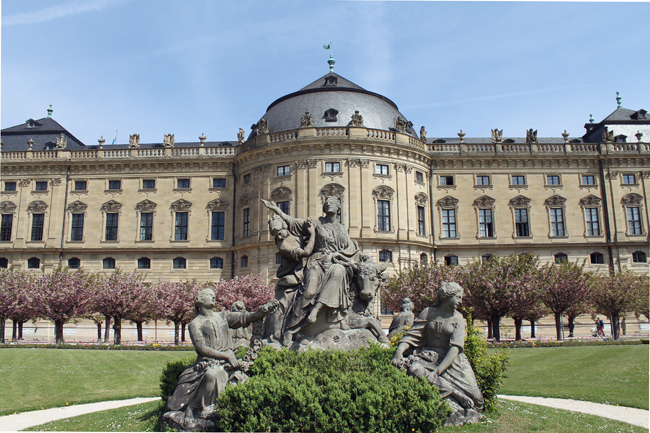
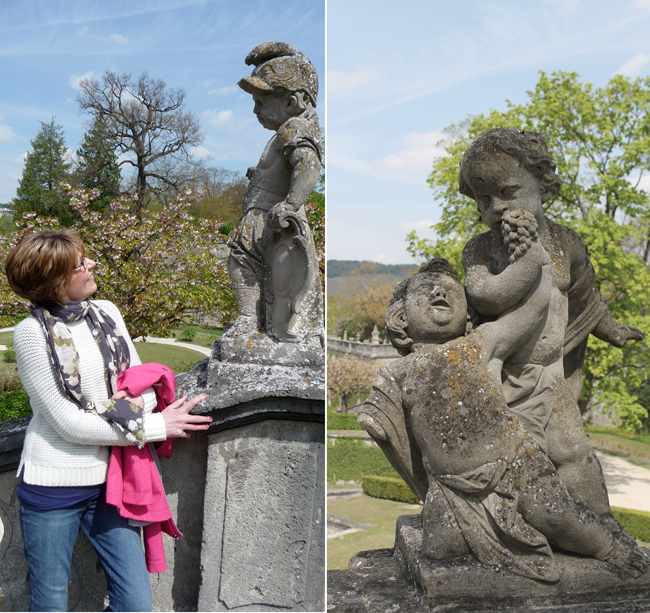


Nuremberg
Their trip spanned May 1, which is a national holiday in Germany and a day-off of work for Derek. We all took an hour train to spend the day in Nuremberg which continues to be one of my favorite cities. Nuremberg is a unique city for visitors; the Gothic architecture of the Altstadt is quite impressive and different from other German cities, and a world-away from the cities of the American midwest.
A day in Nuremberg wouldn’t be complete (for us) without some rain. The damp, moody skies set an appropriate tone for this city. We visited St Lorenz Cathedral (a must-see) and walked along the covered city wall of the Kaiserberg, the 11th C fortress. And we drank Nuremberg beer and ate the city’s specialty sausage, Drei im Weckla “Three in a Bun”.
Below: Nuremberg Altstadt and Albrecht Durer Square
Lunch in Mainz
The next morning we packed the car and left for the Rheingau, a Riesling wine region near the city of Mainz. It was a hazy, bright Saturday so we stopped for lunch and walked through the market where people were out buying produce and sampling the fresh wines of the season. Mainz had been beckoning us for some time and our quick stop encouraged us to return. The city has a museum dedicated to the Gutenberg press, the typesetting technology that created the first printed book (the Bible) and the city became a place where the mass-production of books was possible.
Below: Mainz Cathedral and Market square
4-Days on the Rhine River
Our destination was Hattenheim, a quiet wine village on the Rhine. We rented a cottage that was once a horse stable belonging to the Hessian state winery. Our host told us how she had restored the property as a guesthouse. The space was perfect for the four of us– cozy and comfortable and an ideal base for day trips to villages along the River.
The lure of the Rheingau is that it is the center of Riesling wine region. We stayed in an area where winemaking has been present for at least a thousand years. We wandered to the village’s wine garden where you can bring a picnic and order glasses of fresh local wine and sit by the river.
The Riesling wines that we knew of before our visit were sweet, sparkling dessert wines. We tasted an excellent trocken (dry) white Riesling from a small vineyard in Hattenheim called Irene Söngen. Rieslings really come to life paired with the season’s harvests– fresh strawberries and asparagus.
———
We hiked a short stretch of the long-distance hiking trail, the Rheinsteig, from St Goarhausen to the overlook of the famed Loreley Rock. The Rhine is a commercial route used by barges to transport goods arriving from the North Sea. The legend of the rock is that the bend in the river was so narrow and sharp that many ships sank under the watch of the mythical mermaid, Loreley.
The next day we rented bikes and peddled along the river from Bingen to Bacharach. The Mittelrhein “Middle Rhine” is a protected world heritage site and is a popular area for river boats and tourists. There are 40 castles and fortresses perched above the river amidst steep vineyards. The castles were built by competing knights, princes, and bishops as toll-stops for merchant ships — Iron chains blocked the river and guaranteed payment for passage. We stopped at Burg Stahleck, which is now a youth hostel — and Burg Rheinstein, a privately owned museum and hotel.
Below: Ferrying across the River to Bingen; The river bend at Bacharach; Derek at Burg Stahleck, Burg Rheinstein; The cottage in Hattenheim.





Bamberg
The next weekend we daytripped to another historic city, Bamberg. Derek and I spent an afternoon in Bamberg over Easter of last year (we wrote about it here). We enjoyed this round more; the city was warmer and busier than it was last year in early April!
In the region of Franconia, May is peak season for Spargel “white asparagus” (The green type of asparagus is appropriately named Grün-Spargel). Spargel has a short harvest, and Germans appear to savor it. This vegetable ‘delicacy’ has not seen daylight, which is the reason it remains white.
At this time of year the announcement of Spargel appears on the signboards of Franconian restaurants ‘Wir haben Spargel!’ and is served with a cream sauce, or pureed into a creamy soup. We were discussing how it is grown when we saw a field of covered Spargel mounds!
Disclaimer: I am going to venture out onto a limb. My personal thoughts are that Spargel is not bad, but is far from delightful. Its soft cooked texture requires barely any chewing.
Below: Bamberg’s Rathaus, Spargel for sale in the market, Spargel mounds.



Mother’s Day!
My parents last day in Germany was Mother’s Day. We spent the day in Würzburg, and had an al fresco brunch at Caféhaus Michel in Würzburg. We walked through the gardens at the Residenz and Fortress, had a special dinner, and toasted to a great trip on the Alte Mainbrücke with a glass of Würzburger Bacchus. Prost!
Links
Video: Germany’s Romantic Rhine and Rothenburg Rick Steve’s Europe
Understanding German Wines Tim Glaser, Master Sommelier
Germans Go Crazy for White Asparagus DW.de


